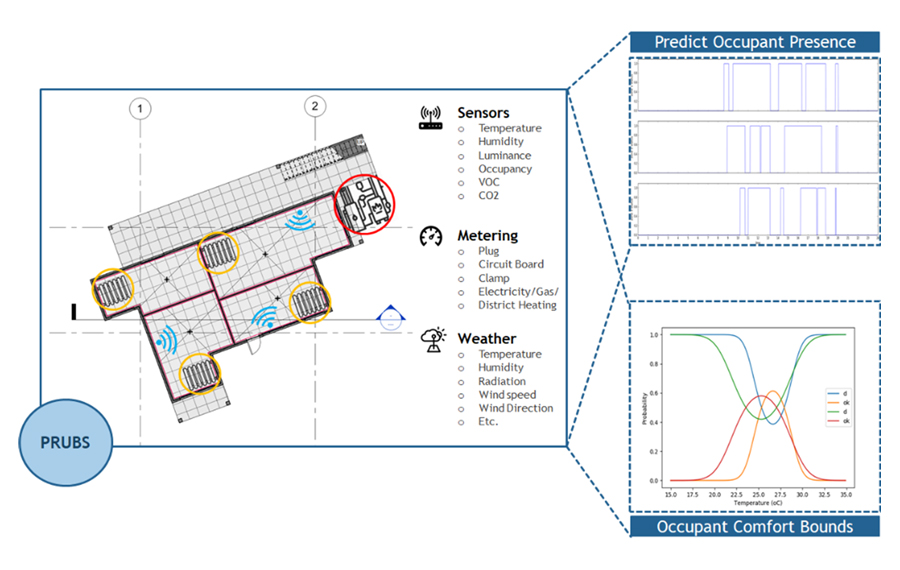BIMMER TOOLS
Profiling Resident Usage of Building System (PRUBS)
Responsible Partner
Hypertech
The accuracy of a 3D zonal-type simulations based on widely used simulation engines (e.g EnergyPlus) is highly affected by the level of detail of its input data, where recent studies have shown that the occupant behaviour data consist the major cause of uncertainty in the building energy performance estimation results. Hence, having a deeper understanding and properly modelling the occupant behaviour have been of paramount importance within IEA EBC Annex 66, where data, methods and models have been developed and applied to understand and reduce the gap between simulated and measured building energy performance by representing occupant behaviour in a standardized XML schema (obXML).
PRUBS leverage the outcomes of Annex 66, adopting obXML as its populated data model, and applying Machine Learning algorithms on IoT data streams provided by a sensor network that will be designed and installed to the pilot sites, generates occupant behaviour profiles that mimic the inhabitants’ actions. These profiles are subsequently used to project the building system (e.g. heating/cooling) utilization boundaries that lie within the comfort zone of the residents.

The BIMERR Interoperability Framework (BIF) consists of four components:

